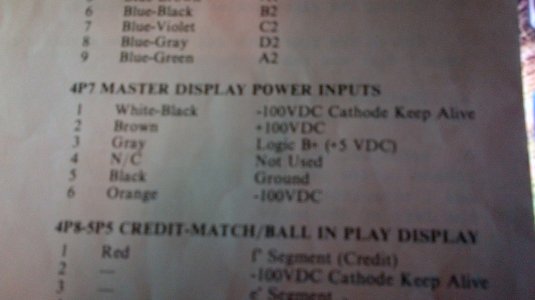At what points are you holding the test leads?
You have to be specific in the description you give here, when checking the continuity of a wire.
The coin switches should have two wires running from each one. follow each color, one at a time, from the switch, to the pin that it goes into, in the back of the bulkhead plug and starting with one lead of your multimeter, touch it to the solder at the beginning of that wire, at the switch and the other lead of your multimeter against the other end of the wire, at the back of the bulkhead plug on the same color wire.
Do this on both wires coming from each switch, all the way from the solder at the switch where the wire begins, as far as you can follow/ trace the wire until it ends, checking it's length for continuity. The idea is to do it in steps, to check sections of the same wire, one at a time, from each point where it may stop within a plug.
This test doesn't have anything to do with any power that the machine cycles through the wire you're testing. You aren't looking for how much power is going through the wires yet. You are simply checking the ability to carry power, within each, individual line, one at a time.
Once you have determined that each component (switch) and each of both lines coming from the switch can conduct/ carry power using the Ohm/ Continuity check, you can then determine how much power the lines have, when the machine is on.
The Multimeter sends it's own low voltage through it's leads to test whatever it is that you touch each of the leads to, to determine how much conductivity the object (in this case, a wire, switch, solder, plug, etc.) can have.

